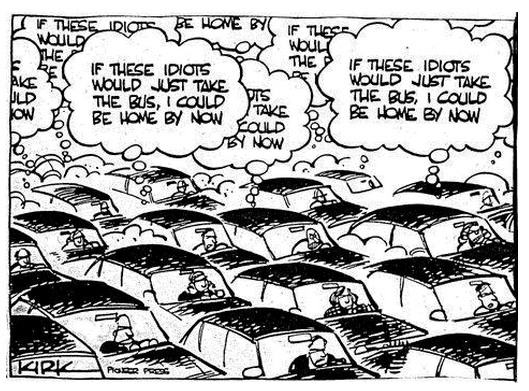Monarch Butterfly
Superstar
On how to pay for the transit projects and operations. Consider that in the U.S. election this week, about 70% of referendums for transit passed. See link.
These included sales tax increases, some of which needed ⅔ majority in the referendum.
Nearly 70% of US transit ballot measures pass
If all the municipalities in Ontario had a sales tax directed for public transit, that could be an acceptable revenue tool. After all, if we buy something in a U.S. city, tourists are funding their transit projects. Shouldn't tourists to Ontario do the same?
These included sales tax increases, some of which needed ⅔ majority in the referendum.
Nearly 70% of US transit ballot measures pass
PUBLIC transport across the United States was a major winner in the November 8 election as 33 of the 48 local and state-wide public transit measures up for a vote were approved; a passage rate of 69%, based on unofficial results.
According to the American Public Transportation Association (Apta), the 49 ballot measures totalling nearly $US 200bn that were voted on were the largest in history.
“Yesterday's success demonstrates that voters have once again continued their legacy of strong support for local investment in transit options. Since 2000, the average success rate of transit measures is 71%,” Apta said in a statement.
The largest measure in the country, Los Angeles County's Measure M, was passed with 69% approval with all precincts reporting. The sales tax increase needed a two-thirds majority to pass and is expected to raise $US 120bn over 40 years to help fund transport improvement projects, including Los Angeles County Metropolitan Transportation Authority (LACMTA) schemes to connect Los Angeles International Airport to LACMTA's Green Line, Crenshaw/LAX line and bus services; extend the Purple Line metro to Westwood; extend the Gold Line 11.7km; extend the Crenshaw Line north to West Hollywood; and build a 6.1km downtown light rail line. The measure will also provide $US 29.9bn towards rail and bus operations, and $US 1.9bn for regional rail.
California's other big transit wins include Measure RR in the San Francisco Bay area, which will authorise $US 3.5bn in bonds for Bay Area Rapid Transit rehabilitation and modernisation. It required a cumulative two-thirds vote in San Francisco, Alameda and Contra Costa counties for passage and received 70% approval.
Measure B, which would raise sales tax by a half-cent for 30 years to provide $US 3bn in funding for Santa Clara Valley Transportation Authority projects, passed with 71% approval and required a two-thirds majority to move forward.
One measure that failed to pass was in San Diego where Measure A, an initiative that would have raised $US 7.5bn for public transit, did not reach the required two-thirds majority, but did win a 57% approval.
Seattle was also a major winner while Atlanta voters approved a half-cent sales tax increase to raise $US 2.5bn over 40 years to fund rail and bus improvements to Metropolitan Atlanta Rapid Transit Authority's system.
If all the municipalities in Ontario had a sales tax directed for public transit, that could be an acceptable revenue tool. After all, if we buy something in a U.S. city, tourists are funding their transit projects. Shouldn't tourists to Ontario do the same?





